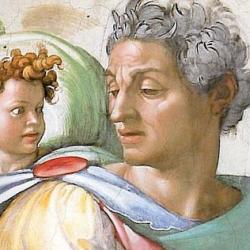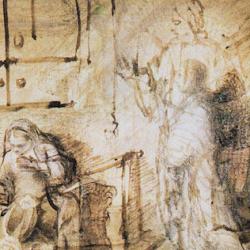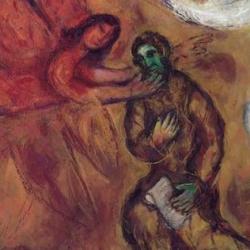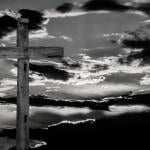The scene of restored shalom in Isaiah 11:6-8 is intricately put together. The poem breaks up into two stanzas with a 3 + 1 arrangement,. the first stanza is verse 6, which has three animal pairs, climaxing with the young child who leads:
1. Wolf and lamb
2. Leopard and kid
3. Calf, young lion, fatling
Plus:
4. Young child
The animal list breaks into three sections, but there are seven different animals listed, a link with creation. The young child (the phrase is the same as Solomon uses of himself in 1 Kings 3) is the fresh new Adam who leads the beasts and maintains the peace.
The second stanza takes up verses 7-8:
1. Cow and bear
2. Young (of cow and bear)
3. Lion eats like ox
Plus:
4. Nursing child
Here we have three clauses regarding animals, but instead of seven animals, we have only four mentioned (or five if “their young” are counted). But verse 8 adds two more animals, cobra and viper, and shows that this fresh new child-Adam is better than the original Adam. As a newborn, Adam was not capable of playing by the cobra’s hole or putting his hand in the viper’s den. When the Branch comes, those made like children will play with snakes and serpents.
This is not the only advance in the two stanzas. The first stanza (verse 6) emphasizes that traditional enemies welcome one another, share the same space, and yet are at rest. But the second stanza (vv. 7-8) highlights food. Cow and bear graze in the same field, and the lion’s diet turns to straw, so that lion and ox can be table fellows. The animals are brought together into one fold with one child-shepherd, and they share the same food.










